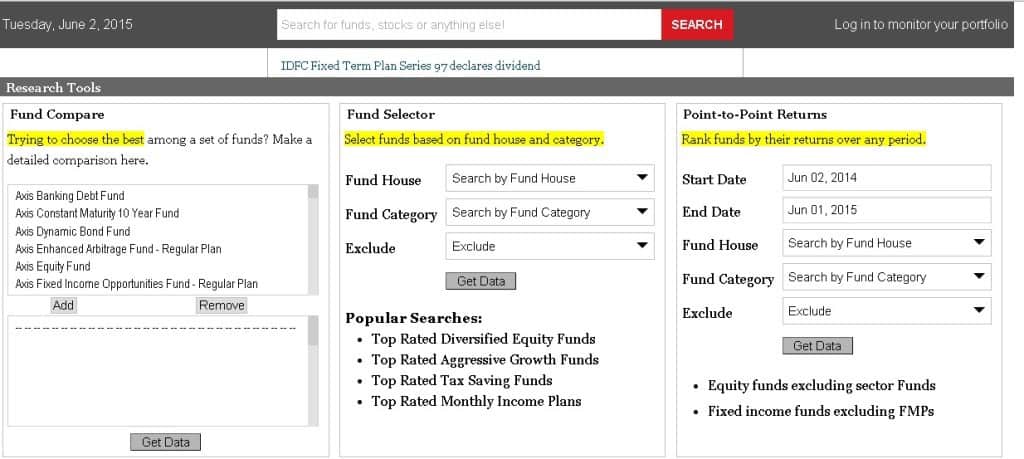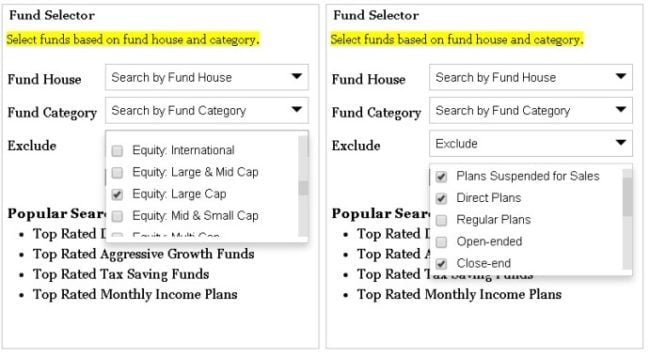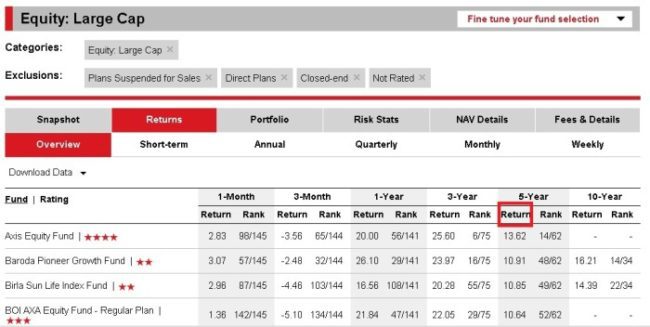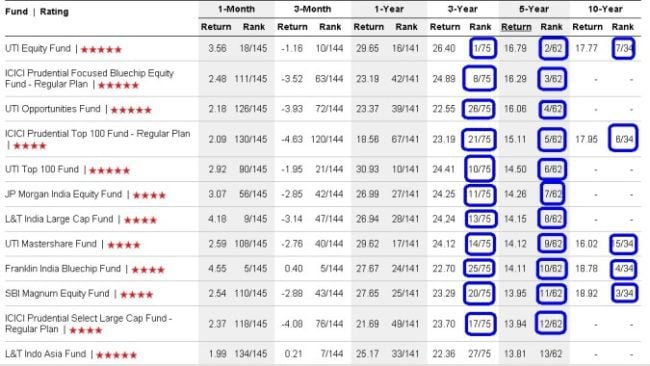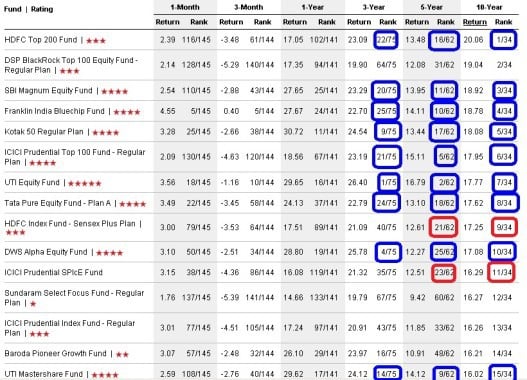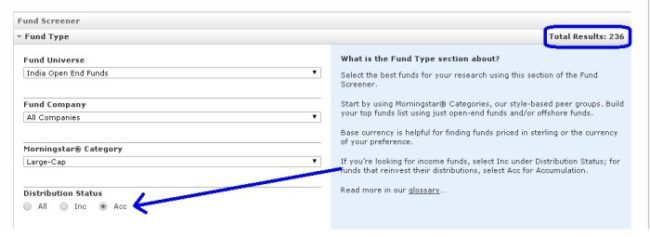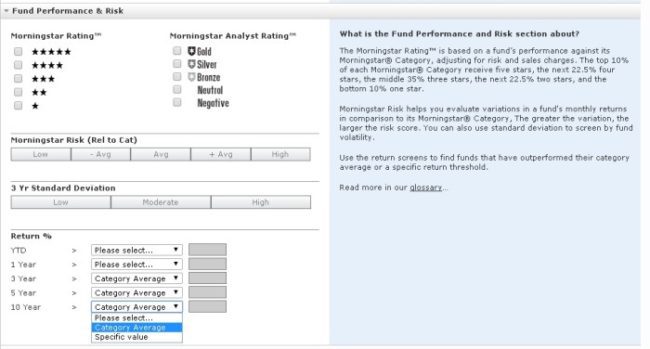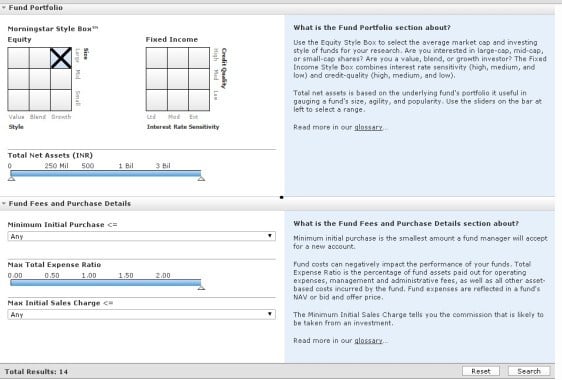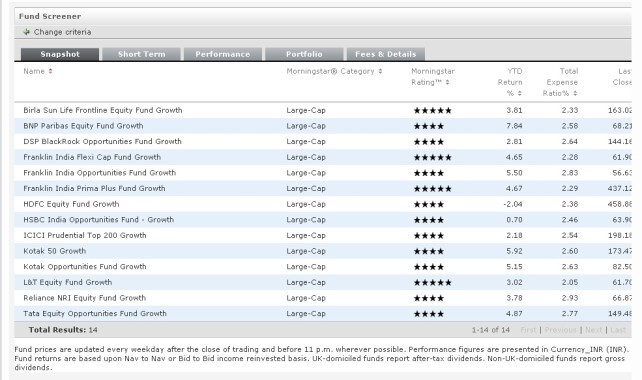Last Updated on September 4, 2018 at 10:09 am
Any selection process should have three components: (a) an objective; (b) a method to create a shortlist and (c) a method to finalize with the shortlist.
Yesterday we discussed the objective. Today we shall consider how to create a shortlist from which an equity mutual fund can be selected.
If you have not read yesterday’s post, I strongly urge you to do so before reading this any further:
How to select an equity mutual fund -preamble
Join 32,000+ readers and get free money management solutions delivered to your inbox! Subscribe to get posts via email! (Link takes you to our email sign-up form)
🔥Want to create a complete financial plan? Learn goal-based investing? Exclusive access to our DIY tools? Increase your income with your skills? Enjoy massive discounts on our robo-advisory tool & courses! 🔥
Update: Now I provide monthly screeners
Creating a shortlist
Note: The description of the shortlist may appear long. In practice, you should be able to create one in under 150 minutes on your first attempt and in under 10 minutes later. So please hang on.
Creating a shortlist is as important as it is difficult. The criterion used to create one is arbitrarily chosen and is based on personal comfort. It can neither be too broad (meaning too many funds to analyze deeper), nor too narrow (if only a few funds satisfy us, then they are likely to fall out of favor soon). F0r example, the rating of a five-star fund can only go down!
We need to cast a reasonably broad net to create the shortlist. Peer comparison is a necessary evil to create the shortlist. I prefer to abandon all peer comparison once the shortlist is prepared.
The primary reason for that is simple: before selecting a fund, we are analysts. After selection, we are investors. Analyst and investors will have very different numbers (returns/risk metrics) to stare at when the asset class is volatile.
Once I invest, I take decisions based on the health of my portfolio tagged to a specific goal. Many make the mistake of worrying about peer comparison, view their holdings like analysts instead of viewing it as investors.
I will discuss two methods of creating this shortlist: with value research online and with Morning Star. It is easy to extend this method to other portals.
Shortlisting with Value Research Online
Update: You can now use these tools which get data from Value Research directly: Mutual Fund Screener Version 6.0
and Freefincal Mutual Fund Screener with SIP Returns
This is the method discussed in the previous version: Step-by-Step Guide to Selecting a Mutual Fund
Since the time it was written, VR online made a crucial change: It removed the “last seven years trailing return” entry from the category listing.
Trailing return simply refers to the CAGR for the last 1/3/5/7/10 (etc.) years at any given point in time. If I am not wrong, VR updates this each month.
Removal of the 7Y return has made the shortlist a bit longer.
Let us know go through this process, step by step. Click on the images to enlarge them if you wish.
1) Go to https://www.valueresearchonline.com/
Skip the annoying ad, go to the main page and scroll down until you see ‘research tools‘.
We will be working with the ‘Fund selector’
2) Leave the fund house entry alone.
In the fund category entry (left image bel0w), uncheck whatever is checked and check “Equity: large cap” (we assume that is the category we are looking to invest in. The process for other equity categories is the same).
In the exclude entry (right image below),
a) check plans suspended for sales
b) check direct plans (adding them will only clutter the process. The folios and relative performance for regular and direct funds is the same).
c) check closed-ended
Scroll down and uncheck 3 star, 2 star, 1 star and unrated (optional).
When ready, click “Get Data”.
3) You will be taken to this sheet. Click on returns.
4) You will then be taken here.
We will now discuss two methods of shortlisting consistent performers.
A) Anchor the search with 5-year returns. Click on 5-years returns (red box above) once or twice until the fund are arranged in ascending order. Then you need to decide the cut-off rank. Suppose we select funds which were ranked in the top 25 over last 3 years, 5 years and 10 years, we will get something like this (partial list).
Invariably we have shortlisted many (not all) 5-star or 4-star funds which are less than 10 years old. If you are fine with this, then you can proceed.
By removing the 7-year entry, VR forces us to rely on its star rating more. Who are they to tell us (at least me) that it is enough to review only 5-year and 3-year histories?
I prefer a fund which has consistently been in the top 25 for 3, 5 and 10-year periods. So I would like to click on the 10-year returns until they are arranged in ascending order and then create the short list.
Top 25 might sound too broad. Narrower the net, higher the expectation and sooner the fund is likely to disappoint.
As far as I am concerned, I will not repeat this exercise unless the selected fund is a laggard in my folio after giving it at least 3 years to perform. Laggards are not identified by peer comparison (drop in star rating etc.) but with respect to net XIRR of the equity portfolio. See more here: How to review a mutual fund portfolio
B) Anchor the search with 10-year returns. Click on 10-years returns once or twice until the fund are arranged in ascending order. Then you need to decide the cut-off rank. Suppose we select funds which were ranked in the top 25 over last 3 years, 5 years and 10 years, we will get something like this (partial list). Funds marked in red have done well in the past but not in the recent future relatively.
We now have more 10-year old funds and the dependence on star rating is lower. The shortlist also is a bit smaller.
I am more comfortable with this. Now that we have a shortlist, we are ready to analyze further. Before that AMC bias may shorten the list further (we are humans, not machines).
I may prefer a Franklin, HDFC or ICCI over Kotak, Tata or DWS. I may already have an account in one of the amcs!
Had we shortlisted only 4 and 5-star funds, we will end up with 19 funds. This way (with 5-year or 10-year anchoring) we only have 9-10 to choose from.
We will take up further analysis in the next post on this series. I would now like to discuss a faster way to shortlist with Morning Star.
Shortlisting with Morning Star Screener
Morning Star India has a nice screener which can automate the above shortlisting and reduce it down to minutes.
However, it has only large cap and mid/small cap categories. Unlike Value Research which distinguishes among large cap, large and mid-cap, mid and small-cap and multi-cap.
This can present a considerable problem unless we look at the folio carefully. When I tried out a large cap short-list I end up with many large and mid-cap funds. If you can handle this, this is a smart way to create a shortlist.
1) Go to
http://www.morningstar.in/tools/mutual-fund-screener.aspx
First make the following choices. The total results will vary according to the choices. If it is zero, it means you will have to change the choices.
Inc stands for dividend option and Acc stands for growth.
Scroll down to further make the following choices
First choose 3-year, 5-year and 10-year returns above the category average.
As you set the option for each year, have an eye on the total results at the top. It should not become zero. If it does, you will have to change or relax your options.
With the above choices, 15 funds to choose from.
Play around with the morning star risk rating ( low, below average, average, above average, high) and
3-year standard deviation to see if you can reduce the shortlist.
Low –> 0 results
- Avg (below average) –> 3 results
Avg –> 6 results
-Avg and Avg –9 results (I like this)
You can choose what you like.
Further modifications can be done with the so-called Morning Star Syle Box.
For large cap funds choose:
Large and Growth (stocks with substantial earning, high PE, high PB)
A good 14 out of the 15 shortlisted funds belong to this category. One to large and a blend of value (underpriced stocks with low PE and low PB) and growth.
If you don’t understand this, you can ignore the style box for a start or read more about the difference between growth and value stocks or about the morning star style box.
Don’t worry about AUM of a large cap fund. For a mid and small cap fund, it is not a terrible idea to choose the fund with smallest AUM after further analysis.
Mid and small cap funds with large AUM (say more than 5000 Crores) tend to have more large cap stocks for liquidity.
Reducing the expense ratio even by one step makes the total results count go to zero!
Finally, hit search to get this shortlist.
Do not jump to conclusions that the shortlist has only 4/5-star funds and that could have been the lone criterion.
If you tried that you will have 43 funds to contend with instead of just 14.
Out of this 14, you will need to weed out the large and mid-cap funds in consultation with Value Research if you are not looking for one!
We are now ready to analyze further. This is equally simple. I will take that up in a different post.
Was this not easy? Anybody with a little common sense can do this.
DIY and go direct. Do not trust anyone who says that mutual fund selection is hard. They say so because they have a business to run.
DIY implies doing everything yourself. Not making a shortlisting and asking others. If you don’t have confidence (time is not the issue), get yourself a fee-only financial planner who will suggest direct mutual fund plans.
What do you think? If you liked the post, do share it with the buttons below.
Part 3: How to select an equity mutual fund – Making a Choice!
🔥Enjoy massive discounts on our courses, robo-advisory tool and exclusive investor circle! 🔥& join our community of 7000+ users!
Use our Robo-advisory Tool for a start-to-finish financial plan! ⇐ More than 2,500 investors and advisors use this!
Track your mutual funds and stock investments with this Google Sheet!
We also publish monthly equity mutual funds, debt and hybrid mutual funds, index funds and ETF screeners and momentum, low-volatility stock screeners.





- Do you have a comment about the above article? Reach out to us on Twitter: @freefincal or @pattufreefincal
- Have a question? Subscribe to our newsletter using the form below.
- Hit 'reply' to any email from us! We do not offer personalized investment advice. We can write a detailed article without mentioning your name if you have a generic question.
Join 32,000+ readers and get free money management solutions delivered to your inbox! Subscribe to get posts via email! (Link takes you to our email sign-up form)
About The Author
 Dr M. Pattabiraman(PhD) is the founder, managing editor and primary author of freefincal. He is an associate professor at the Indian Institute of Technology, Madras. He has over ten years of experience publishing news analysis, research and financial product development. Connect with him via Twitter(X), Linkedin, or YouTube. Pattabiraman has co-authored three print books: (1) You can be rich too with goal-based investing (CNBC TV18) for DIY investors. (2) Gamechanger for young earners. (3) Chinchu Gets a Superpower! for kids. He has also written seven other free e-books on various money management topics. He is a patron and co-founder of “Fee-only India,” an organisation promoting unbiased, commission-free investment advice.
Dr M. Pattabiraman(PhD) is the founder, managing editor and primary author of freefincal. He is an associate professor at the Indian Institute of Technology, Madras. He has over ten years of experience publishing news analysis, research and financial product development. Connect with him via Twitter(X), Linkedin, or YouTube. Pattabiraman has co-authored three print books: (1) You can be rich too with goal-based investing (CNBC TV18) for DIY investors. (2) Gamechanger for young earners. (3) Chinchu Gets a Superpower! for kids. He has also written seven other free e-books on various money management topics. He is a patron and co-founder of “Fee-only India,” an organisation promoting unbiased, commission-free investment advice.Our flagship course! Learn to manage your portfolio like a pro to achieve your goals regardless of market conditions! ⇐ More than 3,000 investors and advisors are part of our exclusive community! Get clarity on how to plan for your goals and achieve the necessary corpus no matter the market condition is!! Watch the first lecture for free! One-time payment! No recurring fees! Life-long access to videos! Reduce fear, uncertainty and doubt while investing! Learn how to plan for your goals before and after retirement with confidence.
Our new course! Increase your income by getting people to pay for your skills! ⇐ More than 700 salaried employees, entrepreneurs and financial advisors are part of our exclusive community! Learn how to get people to pay for your skills! Whether you are a professional or small business owner who wants more clients via online visibility or a salaried person wanting a side income or passive income, we will show you how to achieve this by showcasing your skills and building a community that trusts and pays you! (watch 1st lecture for free). One-time payment! No recurring fees! Life-long access to videos!
Our new book for kids: “Chinchu Gets a Superpower!” is now available!


Must-read book even for adults! This is something that every parent should teach their kids right from their young age. The importance of money management and decision making based on their wants and needs. Very nicely written in simple terms. - Arun.Buy the book: Chinchu gets a superpower for your child!
How to profit from content writing: Our new ebook is for those interested in getting side income via content writing. It is available at a 50% discount for Rs. 500 only!
Do you want to check if the market is overvalued or undervalued? Use our market valuation tool (it will work with any index!), or get the Tactical Buy/Sell timing tool!
We publish monthly mutual fund screeners and momentum, low-volatility stock screeners.
About freefincal & its content policy. Freefincal is a News Media Organization dedicated to providing original analysis, reports, reviews and insights on mutual funds, stocks, investing, retirement and personal finance developments. We do so without conflict of interest and bias. Follow us on Google News. Freefincal serves more than three million readers a year (5 million page views) with articles based only on factual information and detailed analysis by its authors. All statements made will be verified with credible and knowledgeable sources before publication. Freefincal does not publish paid articles, promotions, PR, satire or opinions without data. All opinions will be inferences backed by verifiable, reproducible evidence/data. Contact information: To get in touch, use this contact form. (Sponsored posts or paid collaborations will not be entertained.)
Connect with us on social media
- Twitter @freefincal
- Subscribe to our YouTube Videos
- Posts feed via Feedburner.
Our publications
You Can Be Rich Too with Goal-Based Investing
 Published by CNBC TV18, this book is meant to help you ask the right questions and seek the correct answers, and since it comes with nine online calculators, you can also create custom solutions for your lifestyle! Get it now.
Published by CNBC TV18, this book is meant to help you ask the right questions and seek the correct answers, and since it comes with nine online calculators, you can also create custom solutions for your lifestyle! Get it now.Gamechanger: Forget Startups, Join Corporate & Still Live the Rich Life You Want
 This book is meant for young earners to get their basics right from day one! It will also help you travel to exotic places at a low cost! Get it or gift it to a young earner.
This book is meant for young earners to get their basics right from day one! It will also help you travel to exotic places at a low cost! Get it or gift it to a young earner.Your Ultimate Guide to Travel
 This is an in-depth dive into vacation planning, finding cheap flights, budget accommodation, what to do when travelling, and how travelling slowly is better financially and psychologically, with links to the web pages and hand-holding at every step. Get the pdf for Rs 300 (instant download)
This is an in-depth dive into vacation planning, finding cheap flights, budget accommodation, what to do when travelling, and how travelling slowly is better financially and psychologically, with links to the web pages and hand-holding at every step. Get the pdf for Rs 300 (instant download)